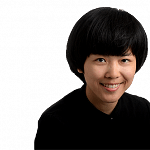Protest placards have always been a highlight for me when I observe rallies. They are a barometer of sentiments on the ground and a nifty visual summary of the diverse views close to the heart of demonstrators.
The signs are also distinct voices of the man in the crowd whose petitions are often lost in the assembly. Handmade signs, in particular, bear an imprint of individuality that makes them deeply personal and sometimes quirky.
At their best, protest placards are creative, moving expressions of dissent in the idiom of words and images.
When the Occupy Wall Street protest raged two years ago in New York City's financial district and later swelled into a global demonstration, I was transfixed by the barrage of signs that were photographed and posted online.
The signboards captured the zeitgeist of the movement at ground zero, the vociferous opposition to corporate greed and socio-economic inequality, and its colourful participants.
Memorable signs include a handwritten cardboard placard that cheekily read "Robin Hood was right". Another, held by a woman with bookish glasses, had the self-referential message, "You know things are messed up when librarians start marching".
The image I cannot get out of my mind though, is a photograph of a young girl, no older than five, who looked to be holding her own handmade sign, an abstract painting on a flattened cardboard box.
The painting is a dense web of brushstrokes in pink-purple, vermilion, green and black. It resembles a pyramid-like form, toppled on its side and pointing to the right.
What the picture lacks in explicitness, it more than makes up with honesty. For me, however, it was an apt visual metaphor of the multifarious agendas swept tornado-like into the movement, and the storm of raw emotions wedged between the demonstrators and the authorities.
Naturally, I kept an eye out for protest placards during the recent demonstration in Hong Lim Park against the Government's Population White Paper, which projected a population of up to 6.9 million by 2030.
While placards that touch on issues of politics are not an uncommon sight at public assemblies here, they are mostly seen at political rallies and tend to be messages of support rather than opposition.
Indeed, my most vivid memories of public protest signs in Singapore come from black-and-white photographs of student protests in the 1950s.
With last month's protest touted as the biggest here since Independence, I was curious as to how many of the more than 1,000 demonstrators would carry signboards and what those signs would look like.
I was unable to visit the rally but, from photographs online, it was evident that placards were the exception rather than the norm. Still, there were a variety of protest signs, from the handwritten to printed, and in a range of mediums such as cardboard, coloured paper and balloons.
Some adopted a minimalist, no-nonsense style. A black placard with bold yellow letters read simply, "No to overpopulated (sic) Singapore".
Others employed humour - a cardboard sign was penned by hand in the form of a chiding love note to the Prime Minister. In this age of technology, there is something tender about seeing a stranger's handwriting, a personal trace, boldly displayed in public.
It was not all just words. A child's printed sign that said, "It is our future. Let us decide!" had the picture of a globe overrun by tiny human figures. Another handwritten placard that espoused the curbing of desires had a hand-drawn Lady of Justice.
Also present were more complex signs that unfolded in sequences. One placard that read "We are not your 'sheeple'" - the latter a made-up word combining "sheep" and "people" - was followed by another which said, "We want to be heard, not herded".
What was absent in many of the placards, though, was reference to the individual and personal experience. First-person pronouns were a rarity and few protest signs, if any at all, touched on how the population estimate had, or might, intimately affect the person holding the signboard.
I am curious why this is so. Perhaps the placard-holders were first-time demonstrators - not unlikely given Singapore's scant history of public protest - and unused to overt displays of dissension. Indeed, some of the placard-holders wore sunglasses, possibly to shield their identity rather than the sun since it was a rainy day.
It is, however, a pity that those placards were not more introspective. Had they been, they could have been poignant and powerful.
Some commentators have cast these protest placards as a parade of empty slogans. Others have cited them as a need for people to exercise caution against naive activism.
While I agree that social activism should not be just hollow utterances, I wonder if it is fair to draw such conclusions from the placards alone.
As a form of activist art, protest placards primarily raise awareness of an issue, the groundswell of opposition and the diverse values and perspectives held by a plural society on the issue. To expect them to also offer profound meaning and a nuanced summary of the issue is unrealistic and misconstrues the medium.

The placards hoisted at Hong Lim Park fulfilled their purpose. They spoke clearly of the public's earnest displeasure at plans to increase the population to 6.9 million.
The signboards, particularly one that read "Singapore for Singaporeans", also sparked controversy and serious soul- searching online. It raised the question of whether one's stand on the issue meant that he was championing nationalism and xenophobia. The heated debate sharpened people's positions on the issue, regardless of their stand.
The placards may not all have been grammatical, elegantly phrased, visually arresting or politically correct, but they should not be written off flippantly.
This story first appeared in The Straits Times on March 5, 2013
To subscribe to The Straits Times, please go to http://www.sphsubscription.com.sg/eshop/

